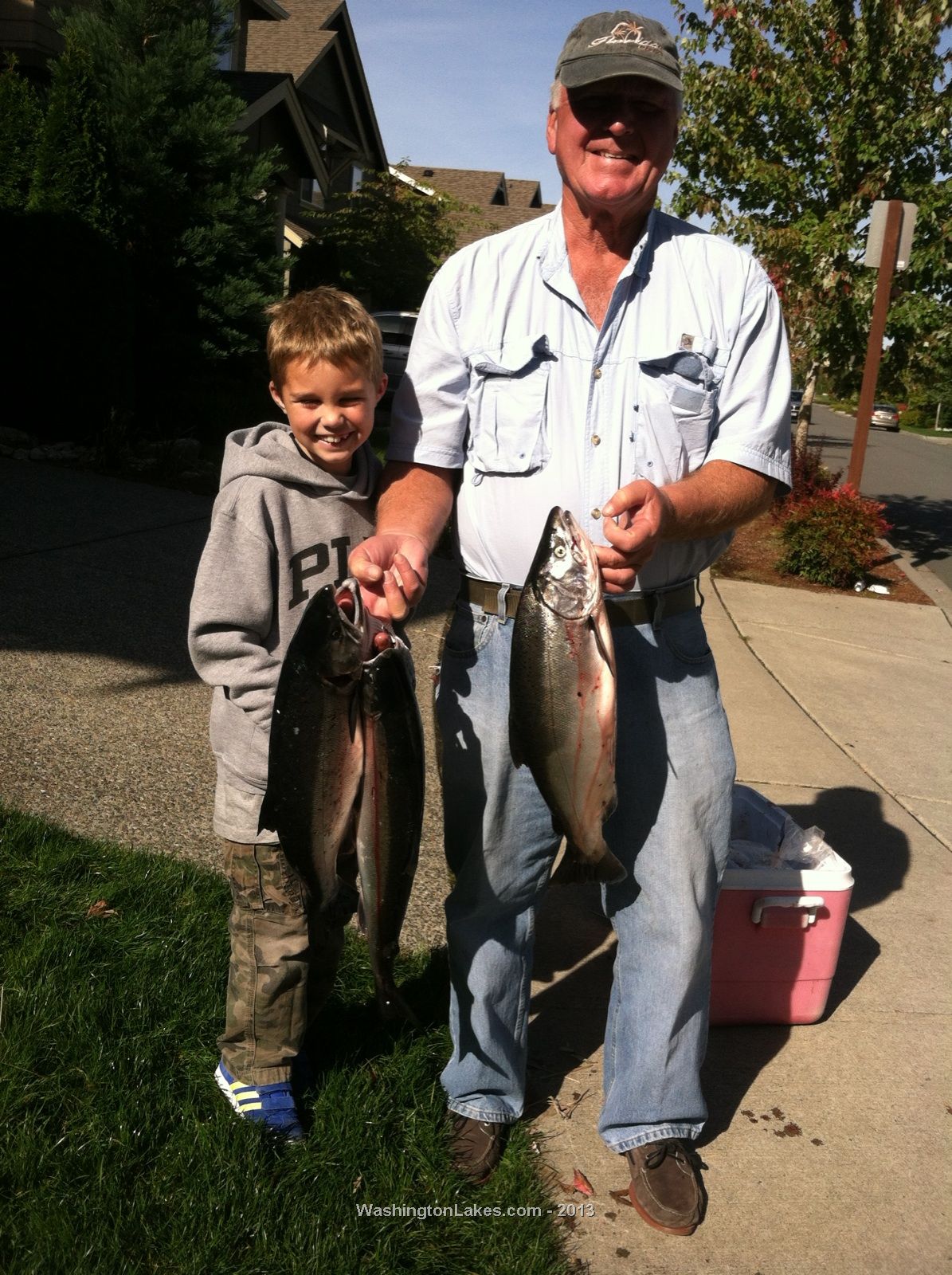kodacachers
10/7/2013 3:25:00 PM
BARCHASER10
10/7/2013 3:46:00 PM
docshane
10/7/2013 4:24:00 PM1. Does anyone run 2 stacked flasher rigs or is there just too much drag?
2. If you stack a lure/plug/cut herring without a flasher on one line and are going to run a flasher rig on the other, which one should go on the bottom to minimize snags and what setback do you do for each?
FYI we had 2 fish hit the lower rig on the stacked side and once got tangled and once did not. I think the time we got tangled was due to the fact that my father in law has never used riggers and didn't understand that the lines had to be immediately cleared when you have a fish on. So, guys who fish together and know what needs to happen when a fish strikes is imperative when stacking.
3. I have electric scotty downriggers and I know some guys use line beads and a conventional release to speed up the stacking process. I was using the double clip release designed specifically for stacking. I found it to be cumbersome and slow. For the guys who stack, what set up do you like for attaching releases?
Thanks guys (and gals I guess). I really appreciate the comments.
kokanee1
10/7/2013 5:32:00 PMMike Carey
10/7/2013 7:03:00 PM
Berchu
10/7/2013 7:30:00 PM
downriggeral
10/7/2013 10:52:00 PMTight lines - Alan
kokanee_slayer
10/8/2013 6:13:00 AM
docshane
10/8/2013 7:32:00 AMI looked at stacking in the salt last night and didn't really see too much info on stacking flashers, probably due to the inherent pitfalls we all seem to have had. I have fished with Mike Jamboretz in Neah Bay several times and I know he stacks as a norm out there. I'm trying to think back to exactly how we rigged the gear, I should know, he's kind enough, or is foolish enough to let me set gear for him when I have the chance to be on his boat. I'm going to go with the former. Anyway, he will run a tomic plug on one rod and a flasher/spoon on the other and we'll fish deep and almost NEVER get lines fouled. There seems to be a lot of variation in people's strategy whether the top line or bottom line gets let out further. I seem to recall on Mike's boat that we used the flasher on the bottom line with a typical setback of about 15 feet. Then the tomic plug went on the line after about 20-25 feet of cable paid out. The setback on the tomic plug (or sometimes spoon) was further, maybe 40 feet. When a fish hits, it's up to the crew and the man on deck to clear the second rod. The crew mans the rigger and the guy who was up to bat fights the fish and the guy who was on deck is retrieving the other lure, which is often still in the release. Sometimes there are doubles on, but I think the key is clear the other gear so you don't foul everything up and loose the fish too. I think some guys like to run a plug on the top line due to the bouyancy of the plug, if you slow down, then the plug floats up and the flasher sinks down. If the plug was the lower gear and the flasher was the upper, then the plug would float up into the sinking flasher when/if the boat slowed. For me, the bottom line is no stacking unless I have guys on the boat that know exactly what needs to happen, otherwise, I think I'll go with other's suggestions that lead and herring or some type of diver is the less stressful way to go. SO! that brings up another question. On the third rod, what is the best diver to get DEEP? How does speed affect one's decision on gear to be employed? Meaning, if trolling slowly, then lead seems to be a more predictable way to get deep and judge your lures position in the water. If trolling fast, then a diver seems to be the ticket since lead would just get blown way back and then (for me at least) it's tough to tell where your gear is actually running.

downriggeral
10/8/2013 9:54:00 PM
